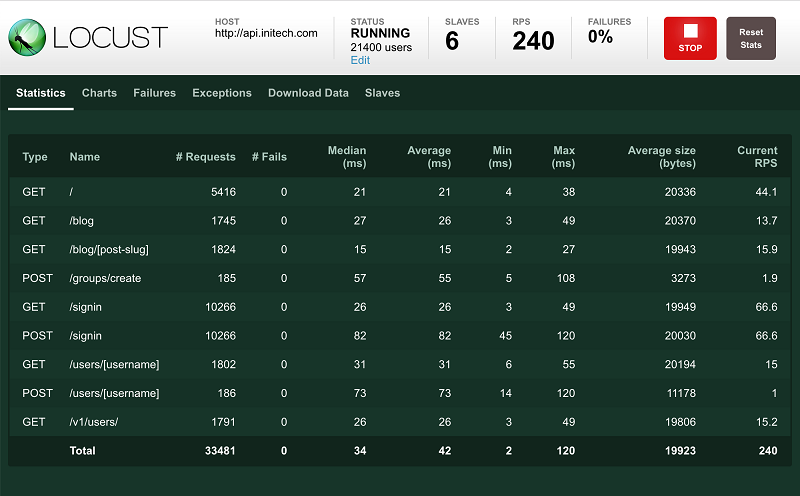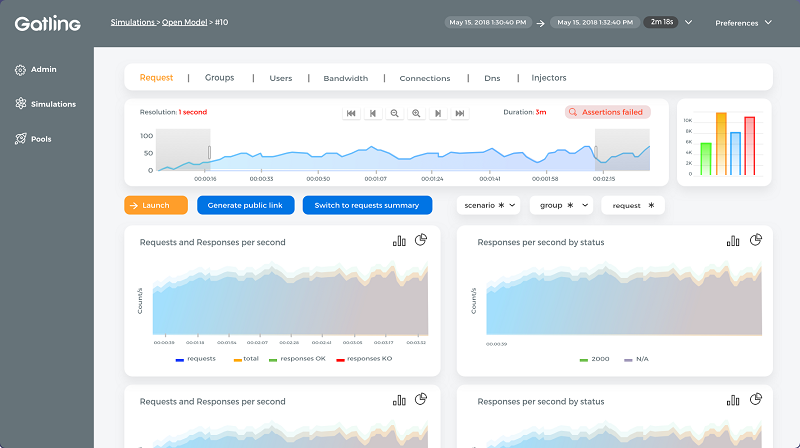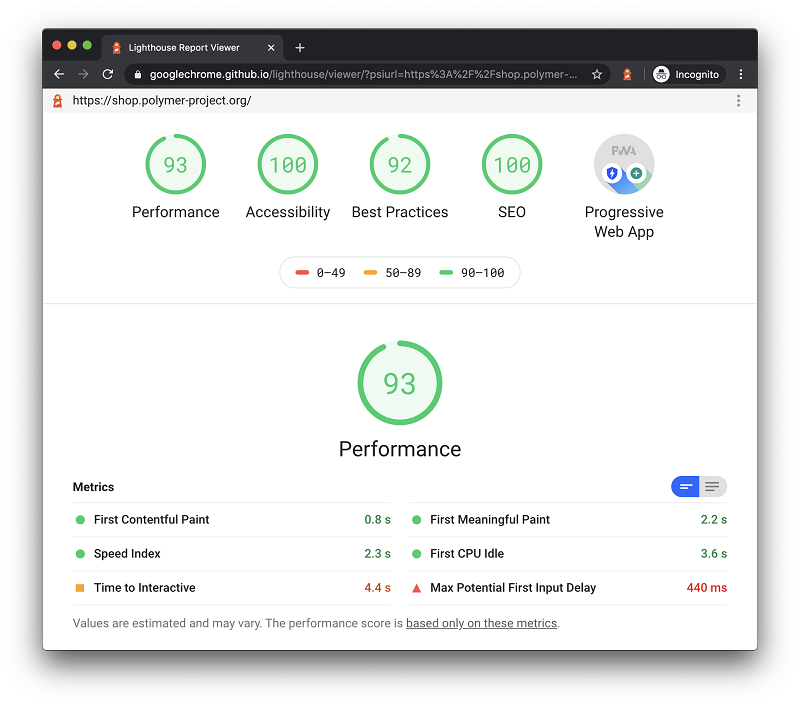Load testing allows you to evaluate the behavior of a system under increasing loads. The purpose of load testing is also to determine the maximum load that a web system or application can withstand.
As defined by the IEEE Guide to Software Engineering Body of Knowledge (SWEBOK), “Software testing consists of the dynamic verification that a program provides expected behaviors on a finite set of test cases, suitably elected from the usually infinite execution domain.”
Load testing is usually performed by special software for load testing. In this article, we’ll be expanding on how load testing can benefit modern websites, along with some load testing principles and tools you can leverage.
Let’s get started!
What is web site load testing?
In general terms, load testing is a subtype of testing that evaluates the performance of a computer system or service. This includes collecting important metrics and determining overall performance. These characteristics also include the response time, and in our case, web systems or applications in response to an external user request.
The purpose of load testing is to establish compliance with the requirements for a given system or application to ensure that the system is operational with the planned number of users or the amount of data being processed.
Load testing can be performed both on the production server of your system and on the backup servers of your web service or application. Load balancing tests can be performed on cloud systems, on-premise servers, and development environments.
Bottlenecks in your website can be found:
- in the backend;
- in the frontend;
- a weak internet connection of your website.
Importance of load testing for websites
In load testing, it’s important to understand the upper limit of the health of a system or web application. This allows project managers and stakeholders to:
- conduct resource planning;
- reserve the necessary capacity in cloud systems;
- preemptively plan the necessary changes in the architecture;
- avoid the DIGG effect and be prepared for peak loads at certain times.
System response time is one of the fundamental metrics for load testing. Generally, if the response time of the system is similar to the normal distribution function, then the system parameters can be considered to fit into the framework of the permitted corridor for the stress test being carried out.
Accurate reproduction of load profiles is an important factor in load testing. For web systems, reproduction of load profiles is implemented by submitting a certain number of requests to the backend, as well as user actions on the frontend.
The methodology for carrying out load testing can be performed in the following directions:
- calculation of the projected number of users or the amount of information that is processed in the web system;
- conducting an experiment with a certain number of users using load testing tools or specialized scripts;
- approximation of values of characteristics of similar web systems and specification of parameters for the system under test.
Tools for load testing
Locust.io
As mentioned on the Locust website, this open source tool allows users to “define user behaviour with Python code, and swarm your system with millions of simultaneous users.”
The advantage of using this tool is scripting functionality, but at the same time if you need to perform your test in the UI, then you need to find other solutions. (Image from https://locust.io/)
 Apache JMeter
Apache JMeter
As mentioned on the official web site, ”Apache JMeter may be used to test performance both on static and dynamic resources, Web dynamic applications. It can be used to simulate a heavy load on a server, group of servers, network or object to test its strength or to analyze overall performance under different load types.”
Apache JMeter is an open source application created on Java. JMeter is available on many cloud platforms to test your web application. Here is a list of measurement protocols for load testing:
- Web - HTTP, HTTPS (Java, NodeJS, PHP, ASP.NET, …)
- SOAP / REST Webservices
- FTP
- Database via JDBC
- LDAP
- Message-oriented middleware (MOM) via JMS
- Mail - SMTP(S), POP3(S) and IMAP(S)
- Native commands or shell scripts
- TCP
- Java Objects
Gatling.io
Positioned as a load testing solution for business applications, Gatling.io is a very good choice if you want to run your load tests on premises or in the cloud.
Gatling.io allows you to use on-demand load injectors, create advanced reporting, integrate with public APIs and Grafana datasource, integrate with CI/CD, access the clustering and distributed mode, and more. This tool has about 8 million users worldwide. (Image from https://gatling.io)

Lighthouse
As mentioned on the official web page “Lighthouse is an open-source, automated tool for improving the quality of web pages. You can run it against any web page, public or requiring authentication. It has audits for performance, accessibility, progressive web apps, SEO, and more.”
One of the key advantages of Lighthouse is the ability to run it from Chrome DevTools and use Lighthouse CI for regression testing. (Image from https://developers.google.com/web/tools/lighthouse/)
Web.dev
Web.dev is an online tool that allows you to audit a website to get recommendations and mesure parameters to improve the front-end and backend parts of your website. This includes progressive web application status, check for accessibility, control using best practices, as well as search engine optimization. (Image from https://web.dev/)

Improving website performance
To increase the speed of your website, which is in fact one of the most important aspects of improving your website, it is necessary to carry out a number of planned activities and maintain this process periodically throughout the entire operation of the system. As a secondary factor, you will get the best load tests for your system.
The following activities will be very helpful in improving the performance of your web system:
- predict the growth in the number of your users;
- track the locations of your main audience and transfer the location in the cloud system closer to your potential users;
- identify the 10 slowest calls to your API and take measures to increase the speed of the corresponding code on the backend;
- test the frontend and determine which pages are loading slowly. Structure information for fast loading pages and related code on the front-end;
- analyze the slowest queries to your database. Switch to noSQL if needed. Use a more powerful database instance in the cloud.
Conclusion
Load testing for web applications is the standard procedure for current projects, including mobile applications as well.
Our qualified engineers at Svitla Systems are constantly working to improve load testing technology for our valued customers, immediately incorporating scalability into all web application projects that we develop.
When supporting software products, we always pay attention to load testing and compliance with metrics for the required performance parameters.
You can contact Svitla Systems to conduct load testing for your projects and improve the code of website programs for the back-end and front-end. We can also maintain your legacy code and improve projects that have been in development for a long time.
Svitla Systems will also be useful to a wide range of customers who want to improve the performance of their web applications in cloud systems, including when moving from a monolithic architecture to microservices.





![[Blog cover] How to build a fitness app](https://svitla.com/wp-content/uploads/2025/04/Blog-cover-How-to-build-a-fitness-app-560x310.jpg)
![[SM cover] How RPA Is Revolutionizing the Logistics Industry](https://svitla.com/wp-content/uploads/2025/03/SM-cover-How-RPA-Is-Revolutionizing-the-Logistics-Industry-560x310.jpg)
![[Blog cover] How to build a food delivery application](https://svitla.com/wp-content/uploads/2025/03/Blog-cover-How-to-build-a-food-delivery-application-560x310.jpg)